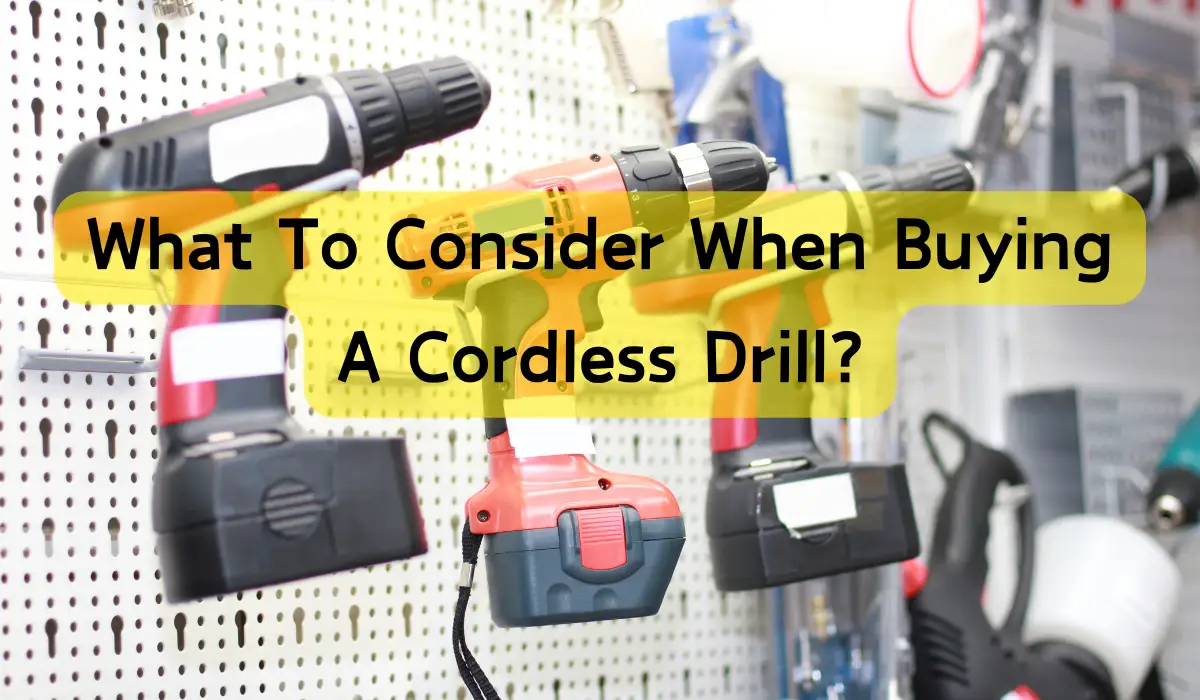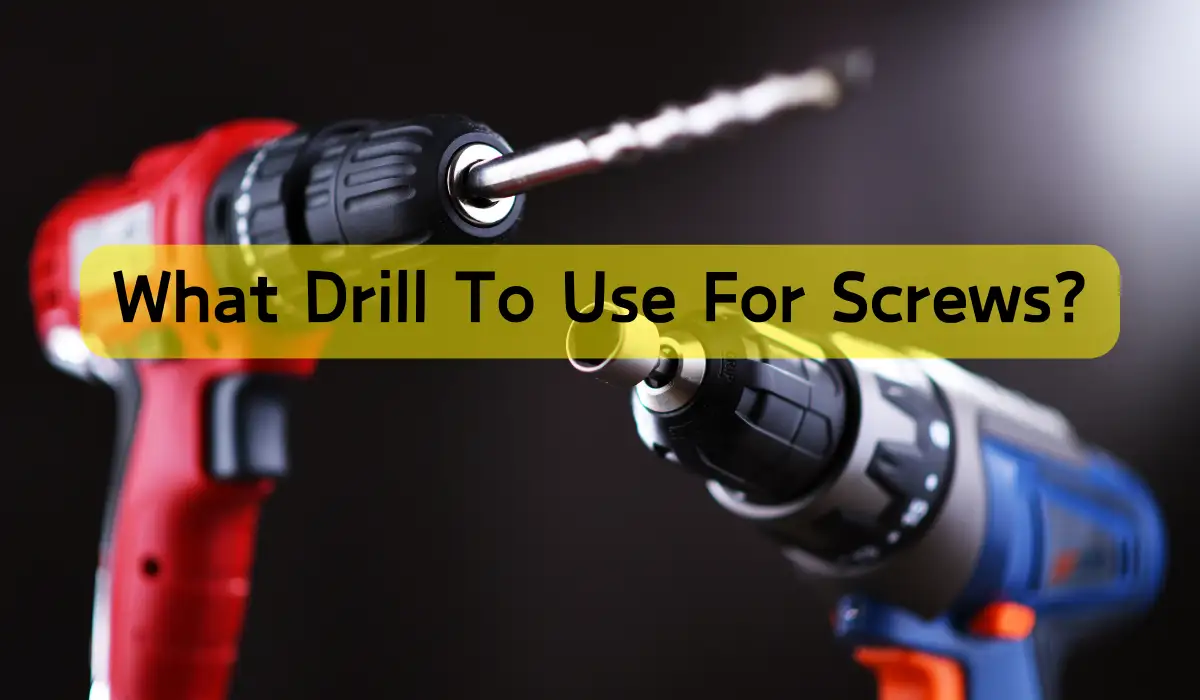When buying a cordless drill, you’re not just choosing a tool, you’re choosing a partner for your next project. To get it right, you’ll want to weigh – higher is better for heavy-duty tasks, while lower is ideal for smaller jobs. Think about battery life too – a higher Ah rating usually means longer battery life. Chuck size, additional features like LED lights, and weight and ergonomics all play a role in your drill’s performance, convenience, and comfort. Factor in these elements, and you’ll be well on your way to finding the perfect drill for your needs – and that’s just the beginning.
Jump to
Key Takeaways
• Consider the voltage and power output of the drill, as higher voltage drills are suitable for heavy-duty applications.
• Check the battery life and type, with lithium-ion batteries offering better performance and longer lifespan.
• Choose a drill with a suitable chuck size, as larger chucks accommodate larger drill bits and accessories.
• Look for additional features such as built-in LED lights, variable speed triggers, and integrated levels or stud finders.
• Evaluate the drill’s weight, ergonomics, and comfort features, such as contoured grips and balanced weight distribution.
Voltage: The Power Behind the Drill
When choosing a cordless drill, you’re likely to come across a range of voltage options, from 12 volts to 20 volts or more, and understanding the implications of each is essential to selecting the right tool for your projects.
The voltage of a cordless drill determines its power and torque output, which in turn affects its performance and suitability for specific tasks.
A higher voltage drill typically provides more power, making it better suited for heavy-duty applications, such as drilling through thick wood or concrete.
On the other hand, lower voltage drills are generally more compact and lightweight, making them ideal for smaller tasks like hanging pictures or assembling furniture.
It’s vital to think about the type of projects you’ll be working on and the level of power you need.
If you’re a DIY enthusiast or casual user, a lower voltage drill might suffice.
However, if you’re a professional contractor or need to tackle heavy-duty projects, a higher voltage drill is likely a better fit.
Battery Life: How Long Will It Last
As you’ve determined the voltage that’s right for your projects, you’re likely wondering how long your drill will keep running on a single charge. This is where battery life comes in – a vital factor in choosing the right cordless drill for your needs.
When evaluating battery life, consider the following key factors:
Capacity: Look for the ampere-hour (Ah) rating, which indicates the battery’s energy storage capacity. A higher Ah rating generally means longer battery life.
Type of battery: Lithium-ion (Li-ion) batteries are commonly used in cordless drills and offer better performance and longer lifespan compared to nickel-cadmium (Ni-Cd) or nickel metal hydride (NiMH) batteries.
Charge cycles: Check how many charge cycles the battery can handle before its capacity starts to degrade. A higher number of charge cycles means longer battery life.
Battery management system: Some drills come with advanced battery management systems that prevent overcharging, overheating, and deep discharging, which can help extend battery life.
Chuck Size: Compatibility and Versatility
You’ll want a drill with a chuck size that can accommodate a variety of bits and accessories, ensuring compatibility and versatility for your projects.
The chuck size refers to the diameter of the drill’s chuck, which is the part that holds the drill bit in place. A larger chuck size allows you to use larger drill bits and accessories, giving you more flexibility in the types of projects you can tackle.
Typically, cordless drills come with a 1/2-inch or 3/8-inch chuck size.
A 1/2-inch chuck is ideal for heavy-duty projects, such as drilling through thick wood or metal, while a 3/8-inch chuck is better suited for lighter tasks, like drilling into drywall or wood.
Consider the types of projects you’ll be working on most often and choose a drill with a chuck size that matches those needs. Remember, a drill with a larger chuck size doesn’t necessarily mean it’s better; it’s about finding the right fit for your specific needs.
Additional Features: Convenience and Ease
Many cordless drills come equipped with additional features that enhance convenience and ease of use, making it easier to tackle a wide range of projects. These features can make a significant difference in your overall drilling experience.
Built-in LED lights: Illuminate your workspace, reducing shadows and improving visibility.
Variable speed triggers: Adjust speed to suit your task, from delicate to heavy-duty applications.
Built-in level and stud finders: Facilitate accurate drilling and driving with these handy built-in tools.
Integrated belt clips or hooks: Conveniently store your drill when not in use, keeping it within easy reach.
These features may not be essential for everyone, but they can certainly enhance your drilling experience. Consider your specific needs and preferences when deciding which features matter most to you.
Weight and Ergonomics: Comfort Matters
When choosing a cordless drill, don’t underestimate the importance of weight and ergonomics, as a well-designed tool can substantially reduce fatigue and discomfort during extended use. You’ll likely be holding the drill for extended periods, so a comfortable grip and balanced weight distribution are crucial. Look for a drill with a contoured grip that fits comfortably in your hand, allowing you to maintain control without straining your wrist or arm.
Here are some key ergonomic considerations to keep in mind:
| Feature | Benefits |
|---|---|
| Contoured grip | Reduces fatigue, improves control |
| Balanced weight distribution | Decreases strain on wrist and arm |
| Compact design | Easier to maneuver in tight spaces |
| Soft-grip material | Enhances comfort, reduces slippage |
Frequently Asked Questions
Can I Use a Cordless Drill in a Humid or Wet Environment?
You can use a cordless drill in humid environments, but avoid direct water exposure. Check the drill’s IP rating; higher ratings mean better water resistance. Still, make sure to wipe it dry after use and store it in a dry place.
Do I Need to Maintain or Clean the Drill’s Battery Regularly?
You should clean your cordless drill’s battery regularly to prevent corrosion and prolong its lifespan. Simply wipe it with a soft cloth and avoid exposing it to extreme temperatures or moisture to keep it in top shape.
Are Cordless Drills Suitable for Heavy-Duty Construction Projects?
You’ll want a high-torque, high-voltage drill with a robust battery for heavy-duty construction projects. Look for drills with 18V or higher voltage and a high ampere-hour (Ah) rating to guarantee you’ve got the power you need.
Can I Use a Cordless Drill With a Variety of Drill Bits?
You can definitely use a cordless drill with various drill bits, but make sure to check the drill’s torque and speed settings to verify they’re compatible with the bits you need to use for your project.
Are Cordless Drills Prone to Overheating During Extended Use?
You’ll be happy to know that modern cordless drills are designed to minimize overheating risks, but it’s still essential you monitor temperature and take breaks during extended use to prevent motor damage.




